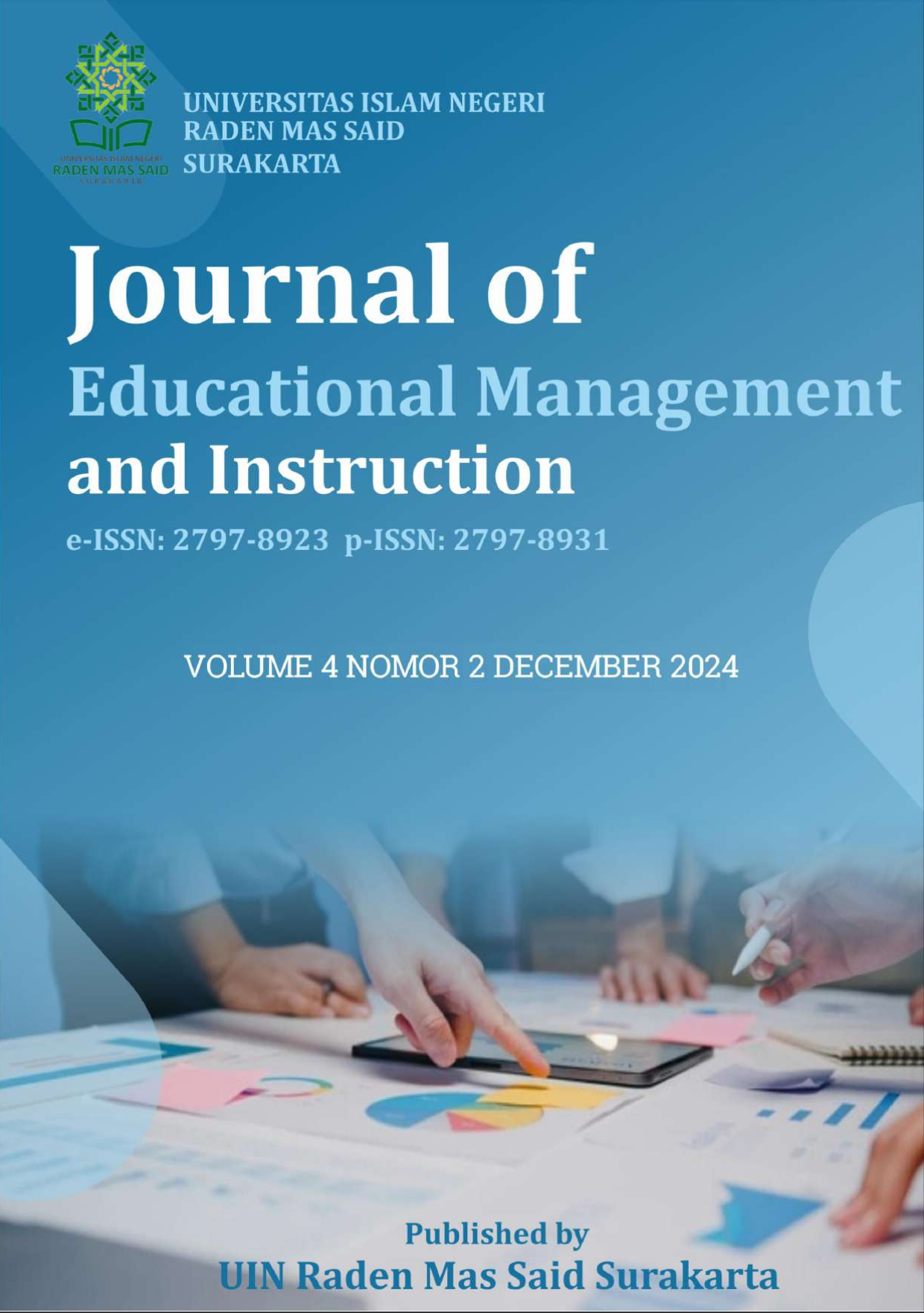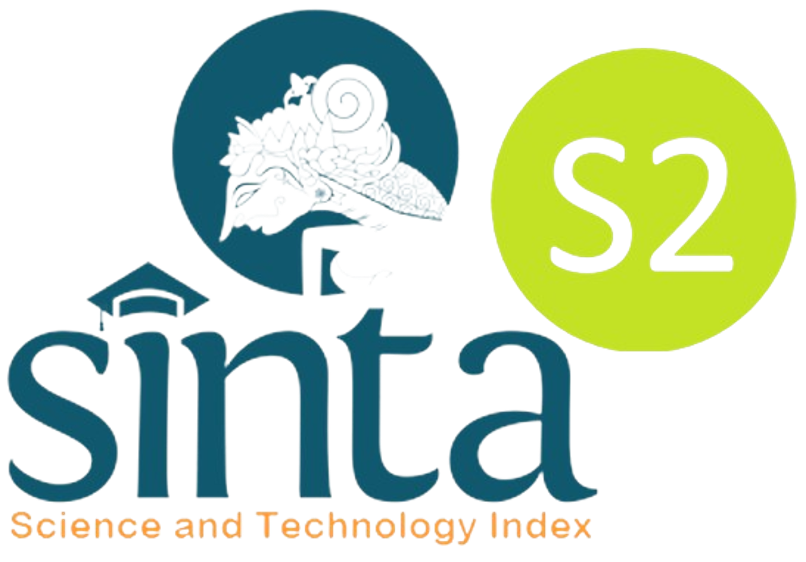Beyond the classroom walls: Unveiling teachers’ and students’ experiences in Biology education
DOI:
https://doi.org/10.22515/jemin.v4i2.9632Keywords:
Biology education, learning experiences, teacher perspectives, student perspectives , educational innovationAbstract
Despite the growing emphasis on formal classroom settings, the learning experiences of students outside the classroom, particularly in biology education, remain underexplored. This research seeks to bridge this gap by unveiling the perspectives of both students and teachers regarding their biology learning experiences. Conducted with senior high school participants in Indonesia, this qualitative study employs purposive sampling to gather data through semi-structured interviews with three biology teachers and seven students. Thematic analysis of the collected data reveals the multifaceted nature of biology instruction, highlighting challenges, achievements, and the potential for pedagogical improvement. The findings suggest that while there are several strengths in current teaching methods, significant opportunities exist to enhance the learning experience by incorporating additional activities beyond the classroom. In particular, the study underscores the need for fostering more immersive and holistic educational environments that can cater to diverse learning styles. This research contributes valuable insights for educators and policymakers, advocating for innovative strategies that extend beyond traditional educational boundaries and stimulate a more dynamic, engaging biology curriculum. The study’s implications call for a reevaluation of current educational practices, aiming to create more inclusive and enriching learning experiences for senior high school students.
Downloads
References
Almasri, F. (2024). Exploring the impact of artificial intelligence in teaching and learning of science: A systematic review of empirical research. Research in Science Education, 54(5), 977–997. https://doi.org/10.1007/s11165-024-10176-3
Armadi, A., Jamilah, J., Wahdian, A., & Astutik, C. (2024). Fostering Character Education in Elementary Schools: The Impact of Extracurricular Activities. AL-ISHLAH: Jurnal Pendidikan, 16(3), 3401–3411. https://doi.org/10.35445/alishlah.v16i3.5536
Baker, M., & Reimann, P. (2024). CSCL: A learning and collaboration science? International Journal of Computer-Supported Collaborative Learning, 19(3), 273–281. https://doi.org/10.1007/s11412-024-09433-4
Borgerding, L. A., Klein, V. A., Ghosh, R., & Eibel, A. (2015). Student teachers’ approaches to teaching biological evolution. Journal of Science Teacher Education, 26(4), 371–392. https://www.jstor.org/stable/43670641
Bravo, P., & Cofré, H. (2016). Developing biology teachers’ pedagogical content knowledge through learning study: the case of teaching human evolution. International Journal of Science Education, 38(16), 2500–2527. https://doi.org/10.1080/09500693.2016.1249983
Burns, E. C., Martin, A. J., Kennett, R., Pearson, J., & Munro‐Smith, V. (2023). High school students’ out‐of‐school science participation: A latent class analysis and unique associations with science aspirations and achievement. Journal of Research in Science Teaching, 60(3), 451–483. https://doi.org/10.1002/tea.21806
Deehan, J., MacDonald, A., & Morris, C. (2024). A scoping review of interventions in primary science education. Studies in Science Education, 60(1), 1–43. https://doi.org/10.1080/03057267.2022.2154997
El-Batri, B., Alami, A., Zaki, M., & Nafidi, Y. (2019). Extracurricular environmental activities in Moroccan middle schools: Opportunities and challenges to promoting effective environmental education. European Journal of Educational Research, 8(4), 1013–1028. https://doi.org/10.12973/eu-jer.8.4.1013
Goldman, Z. W., Goodboy, A. K., & Bolkan, S. (2016). A meta-analytical review of students’ out-of-class communication and learning effects. Communication Quarterly, 64(4), 476–493. https://doi.org/10.1080/01463373.2015.1103293
Hastika, A. D., & Supriatno, B. (2024). Exploring Students’ Perceptions of Outdoor Biology Learning Activities in Botanical Garden. Jurnal Penelitian Pendidikan IPA, 10(5), 2379–2387. https://jppipa.unram.ac.id/index.php/jppipa/article/view/6718
Haverly, C., & Davis, E. A. (2024). Unpacking readiness for elementary science teaching: what preservice teachers bring and how that can be shaped through teacher education. Studies in Science Education, 60(1), 75–119. https://doi.org/10.1080/03057267.2023.2188703
Hirschenhauser, K., Frigerio, D., Leithinger, V., Schenkenfelder, I., & Neuböck-Hubinger, B. (2019). Primary pupils, science and a model bird species: Evidence for the efficacy of extracurricular science education. Plos One, 14(7), e0220635. https://doi.org/10.1371/journal.pone.0220635
Jeronen, E., Palmberg, I., & Yli-Panula, E. (2016). Teaching methods in biology education and sustainability education including outdoor education for promoting sustainability—A literature review. Education Sciences, 7(1), 1. https://doi.org/10.3390/educsci7010001
Jia, F., Sun, D., & Looi, C. (2024). Artificial intelligence in science education (2013–2023): Research trends in ten years. Journal of Science Education and Technology, 33(1), 94–117. https://doi.org/10.1007/s10956-023-10077-6
Kersting, M., Amin, T. G., Euler, E., Gregorcic, B., Haglund, J., Hardahl, L. K., & Steier, R. (2024). What is the role of the body in science education? A conversation between traditions. Science & Education, 33(5), 1171–1210. https://doi.org/10.1007/s11191-023-00434-7
Kleespies, M. W., Gübert, J., Popp, A., Hartmann, N., Dietz, C., Spengler, T., Becker, M., & Dierkes, P. W. (2020). Connecting high school students with nature–how different guided tours in the zoo influence the success of extracurricular educational programs. Frontiers in Psychology, 11, 1804. https://doi.org/10.3389/fpsyg.2020.01804
Lock, R. M., Hazari, Z., & Potvin, G. (2019). Impact of out-of-class science and engineering activities on physics identity and career intentions. Physical Review Physics Education Research, 15(2), 20137. https://doi.org/10.1103/PhysRevPhysEducRes.15.020137
Madieva, G., & Imanbek, K. (2023). The effectiveness of extracurricular activities for teaching biology in the modern world. Scientific Collection «InterConf», 154, 114–123. https://archive.interconf.center/index.php/conference-proceeding/article/view/3310
Mammadova, K. (2024). Practical knowledge and skills to be imparted to students in extracurricular activities in biology in secondary schools. Scientific Collection «InterConf+», 45 (201), 194–196. https://archive.interconf.center/index.php/2709-4685/article/view/6240
Mapulanga, T., & Bwalya, A. (2024). Teachers’ and students’ perceptions of teaching-learning activities used in secondary school biology classrooms: a comparative study. Cogent Education, 11(1), 2372144. https://doi.org/10.1080/2331186X.2024.2372144
Maqbool, I., & Cremin, H. (2024). Students’ experiences of extracurricular activities in elite secondary schools in Lahore. Compare: A Journal of Comparative and International Education, 54(8), 1253–1270. https://doi.org/10.1080/03057925.2023.2195048
Matthews, M. R. (2024). Thomas Kuhn and science education: Learning from the past and the importance of history and philosophy of science. Science & Education, 33(3), 609–678. https://doi.org/10.1007/s11191-022-00408-1
Neher-Asylbekov, S., & Wagner, I. (2023). Modelling of interest in out-of-school science learning environments: a systematic literature review. International Journal of Science Education, 45(13), 1074–1096. https://doi.org/10.1080/09500693.2023.2185830
O’Donnell, A. W., Redmond, G., Gardner, A. A., Wang, J. J. J., & Mooney, A. (2024). Extracurricular activity participation, school belonging, and depressed mood: A test of the compensation hypothesis during adolescence. Applied Developmental Science, 28(4), 596–611. https://doi.org/10.1080/10888691.2023.2260745
Olivares-Donoso, R., & Gonzalez, C. (2018). Biology and medicine students’ experiences of the relationship between teaching and research. Higher Education, 76(5), 849–864. https://doi.org/10.1007/s10734-018-0241-6
Pitura, J., & Chmielarz, D. (2017). "Creating a comic strip is very creative and thanks to it we learn and remember”–student perceptions of a biology challenge in a gamified extracurricular CLIL project. Teaching English with Technology, 17(3), 77–95.
Rajsiglová, I., Poneszová, V., & Teplá, M. (2024). The Influence of Extracurricular Activities on the Interest of Czech and Finnish Students in Biology. Journal of Baltic Science Education, 23(3), 536–549. https://www.ceeol.com/search/article-detail?id=1248270
Reiss, M. J. (2018). Biology education: The value of taking student concerns seriously. Education Sciences, 8(3), 130. https://doi.org/10.3390/educsci8030130
Ribeiro, N., Malafaia, C., Neves, T., & Menezes, I. (2024). The impact of extracurricular activities on university students’ academic success and employability. European Journal of Higher Education, 14(3), 389–409. https://doi.org/10.1080/21568235.2023.2202874
Rodríguez-Muñoz, C., & Huincahue, J. (2024). Interdisciplinary practices for teaching biology: a systematic review. Journal of Biological Education, 1–19. https://doi.org/10.1080/00219266.2024.2399516
Rozenszajn, R., & Yarden, A. (2014). Expansion of biology teachers’ pedagogical content knowledge (PCK) during a long-term professional development program. Research in Science Education, 44, 189–213. https://doi.org/10.1007/s11165-013-9378-6
Santos, C., Rybska, E., Klichowski, M., Jankowiak, B., Jaskulska, S., Domingues, N., Carvalho, D., Rocha, T., Paredes, H., & Martins, P. (2023). Science education through project-based learning: a case study. Procedia Computer Science, 219, 1713–1720. https://doi.org/10.1016/j.procs.2023.01.465
Sari, D. N. R. (2024). The Effect of Scout Extracurricular Activities on the Learning Outcomes of Class X Students in Biology Subjects at State Senior High School 1 Besuki. Journal of Natural Sciences and Learning, 3(1), 20–27. https://doi.org/10.30742/jnsl.v3i1.130
Son, T. N. (2015). Conducting extracurricular education in teaching Biology at the Son Tra Peninsula, Da Nang city for secondary school students. UED Journal of Social Sciences, Humanities and Education, 5(4B), 103–108.
Strat, T. T. S., Henriksen, E. K., & Jegstad, K. M. (2024). Inquiry-based science education in science teacher education: a systematic review. Studies in Science Education, 60(2), 191–249. https://doi.org/10.1080/03057267.2023.2207148
Suryawati, E., Linggasari, M. N., & Arnentis, A. (2017). Technological pedagogical and content knowledge of biology prospective teachers. Biosaintifika: Journal of Biology & Biology Education, 9(3), 498–505. https://doi.org/10.15294/biosaintifika.v9i3.11270
Tosun, C. (2024). Analysis of the last 40 years of science education research via bibliometric methods. Science & Education, 33(2), 451–480. https://doi.org/10.1007/s11191-022-00400-9
Wilcox, J., Voss, S., Kruse, J., Miller, S., & Fettkether, L. (2024). Research Experiences for Undergraduates Through Extracurricular Practitioner Inquiry: Exploring the Experiences of Preservice Elementary Teachers. Journal of Science Teacher Education, 1–21. https://doi.org/10.1080/1046560X.2024.2336769
Zhang, D., & Tang, X. (2017). The influence of extracurricular activities on middle school students’ science learning in China. International Journal of Science Education, 39(10), 1381–1402. https://doi.org/10.1080/09500693.2017.1332797
Downloads
Submitted
Accepted
Published
How to Cite
Issue
Section
License
Copyright (c) 2024 Sigit Haryanto, Siti Hamamatul Marati, Darsinah Darsinah, Hafiza Sana Mansoor

This work is licensed under a Creative Commons Attribution-NonCommercial 4.0 International License.
Copyright
Copyright aims to protect the specific way the article has been written to describe an experiment and the results. Journal of Educational Management and Instruction is committed to its authors to protect and defend their work and their reputation and takes allegations of infringement, plagiarism, ethical disputes, and fraud very seriously. Automotive Experiences is published under the terms of the Attribution-NonCommercial 4.0 International (CC BY-NC 4.0). Authors retain copyright and grant the journal right of first publication (online and print) with the work simultaneously. We use the restrictive license (non-commercial) as follows:
BY (attribution): Users are allowed to share, distribute and redistribute the published article in any medium or format, with an identification of the authors and its initial publication in this journal. Authors are encouraged to post and distribute their articles immediately after publication (e.g., institutional or public repositories, personal websites). Authors are allowed to enter into additional contractual arrangements for the non-exclusive distribution of the published and an acknowledgment of its initial publication in this journal.
NC (non-commercial): Users are not allowed to use the article commercially without the permission of the authors. Authors agree explicitly that the published article is indexed worldwide in databases, repositories and indexation services, even if these services operate on a commercial basis. Authors grant Journal of Educational Management and Instruction explicit the right to include the published articles in databases, repositories and indexation services.
License
License to Publish
The non-commercial use of the article will be governed by the Attribution-NonCommercial 4.0 International (CC BY-NC 4.0). The author hereby grants Journal of Educational Management and Instruction an exclusive publishing and distribution license in the manuscript include tables, illustrations or other material submitted for publication as part of the manuscript (the “Articleâ€) in print, electronic and all other media (whether now known or later developed), in any form, in all languages, throughout the world, for the full term of copyright, and the right to license others to do the same, effective when the article is accepted for publication. This license includes the right to enforce the rights granted hereunder against third parties.
Author's Warranties
The author warrants that the article is original, written by stated author/s, has not been published before, contains no unlawful statements, does not infringe the rights of others, is subject to copyright that is vested exclusively in the author and free of any third party rights, and that any necessary written permissions to quote from other sources have been obtained by the author(s).
User Rights
Under the Creative Commons Attribution-Non Commercial 4.0 International (CC BY-NC 4.0) license, the author(s) and users are free to share (copy and redistribute the material in any medium or format) and adapt (remix, transform, and build upon the material). Users must give appropriate credit, provide a link to the license, and indicate if changes were made.
Rights of Authors
Authors retain the following rights:
- Copyright, and other proprietary rights relating to the article, such as patent rights,
- The right to use the substance of the article in future own works, including lectures and books,
- The right to reproduce the article for own purposes, provided the copies are not offered for sale, and
- The right to self-archive the article.
Co-authorship
If the article was prepared jointly with other authors, the signatory of this form warrants that he/she has been authorized by all co-authors to sign this agreement on their behalf, and agrees to inform his/her co-authors of the terms of this agreement.

























